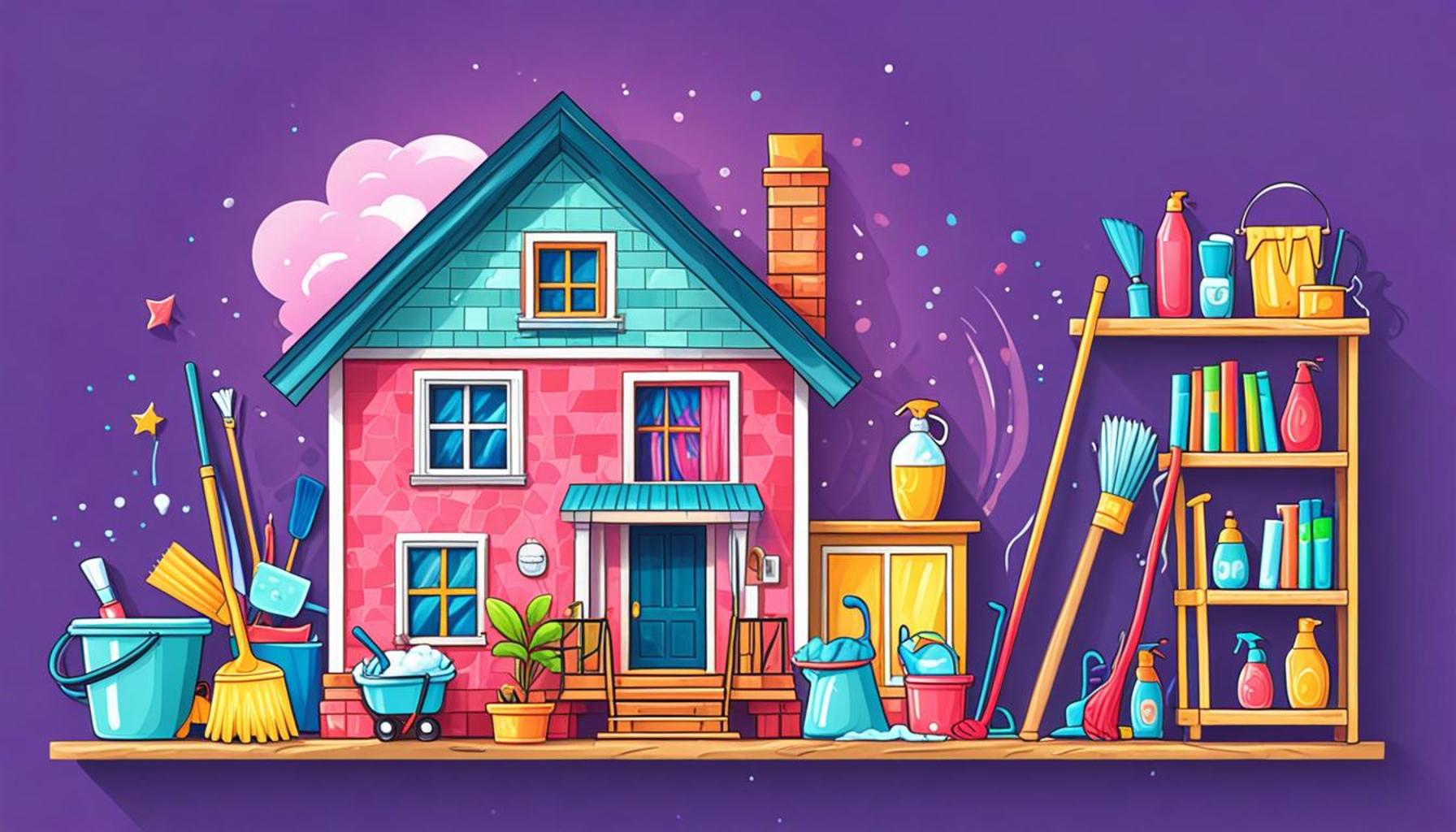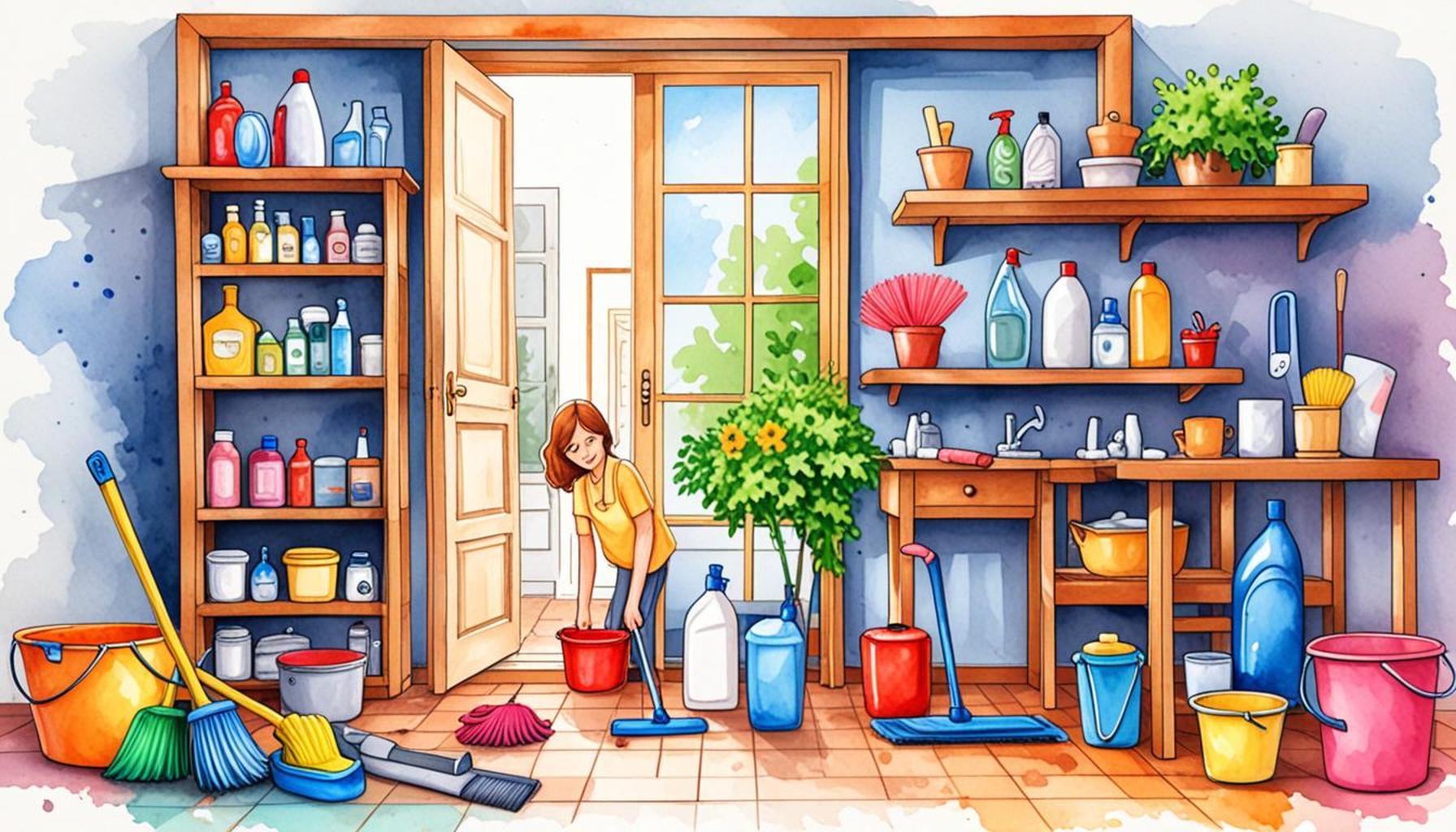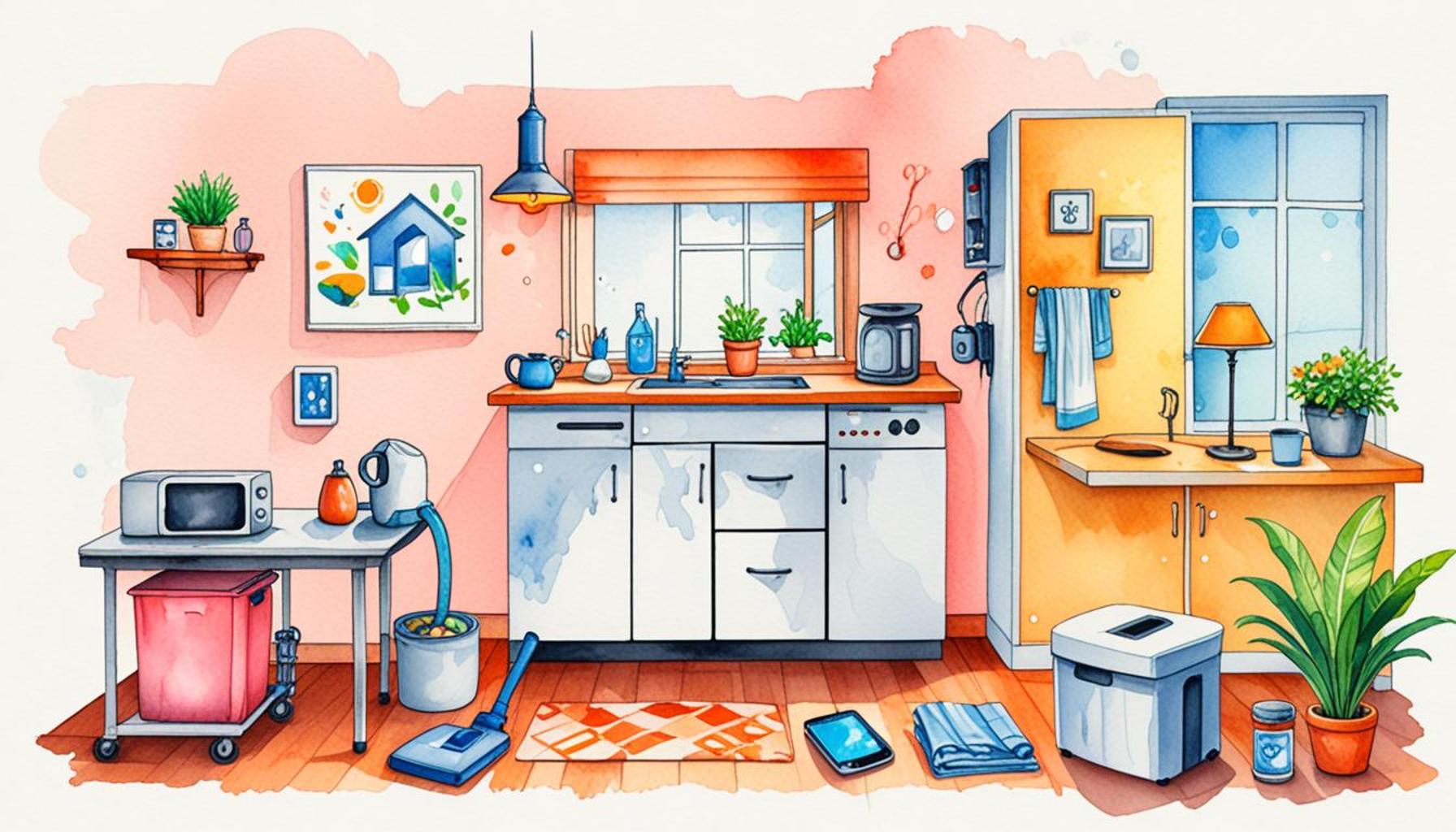Strategies for Prioritization in Home Cleaning to Increase Efficiency

The Importance of Prioritization in Home Cleaning
Cleaning can often feel like an irrepressible mountain of tasks, especially for busy individuals and families. To conquer this challenge, effectively mastering the art of prioritization is crucial. By identifying which tasks require immediate attention and which can be deferred, you can streamline your approach to maintaining a clean and organized home.
High Traffic Areas:Begin by targeting spaces that experience the most daily activity. The kitchen, for instance, often bears the brunt of messes—crumbs, spills, and clutter can accumulate rapidly after cooking or meal prep. Similarly, the living room tends to gather dirt and dust from shoes and daily use. Focusing on these high-traffic areas not only keeps your home presentable but also creates a welcoming environment for family and guests alike.
Time-Sensitive Tasks: Next, consider the tasks that arise from recent activities. Perhaps you had friends over for dinner, and now there are dishes piled in the sink and crumbs scattered across the table. Addressing these immediate messes quickly helps prevent larger clean-up efforts later. This principle can also apply after kids’ playdates, where toys may be strewn about, turning an enjoyable gathering into a time-consuming cleanup if left unattended.
Health Factors: Another vital aspect to consider is the impact of cleaning on your family’s health. Prioritize areas prone to allergens, like bathrooms and bedrooms. Dust and mold can accumulate in these spaces, leading to allergy flare-ups or respiratory issues. By keeping these zones clean, you not only promote a healthier home environment but also enhance comfort and well-being.
Implementing effective cleaning strategies can greatly enhance your productivity. Adopting techniques like time-blocking can revolutionize your cleaning routine. By assigning specific time slots to different cleaning tasks, you can stay focused, ensuring each area receives the attention it deserves without feeling rushed. For instance, dedicating 20 minutes to decluttering the living room or 30 minutes to scrubbing the kitchen can make a significant difference in your home’s tidiness.

As you embrace these prioritization strategies, you’ll uncover various methods tailored to boost your home cleaning efficiency. Exploring tools like cleaning schedules or checklists can aid in maintaining your commitment to a cleaner home. By mastering the art of prioritization, you’re not just enhancing productivity; you’re also creating a more inviting and pleasant living space for you and your loved ones.
DIVE DEEPER: Click here to discover the evolution of cleaning tools</a
Effective Prioritization Techniques for Home Cleaning
Understanding how to prioritize cleaning tasks is essential to maximizing efficiency in your home. To effectively tackle cleaning chores, consider adopting a systematic approach that allows you to maintain focus and energy throughout the process. Here are some practical strategies that can enhance your cleaning routine:
Create a Cleaning Schedule
One of the most effective strategies in prioritizing home cleaning is to develop a cleaning schedule. This plan not only organizes your tasks but also allows you to allocate specific days or times for different duties. Consider the following steps:
- Daily Tasks: Identify essential chores that need daily attention. Tasks such as making the bed, washing dishes, and wiping down countertops should be part of your routine.
- Weekly Duties: Set aside time each week for deep-cleaning jobs like vacuuming carpets and mopping floors. This ensures that your home remains clean and fresh without becoming overwhelming.
- Monthly or Seasonal Tasks: Tackle larger cleaning responsibilities, such as organizing closets, washing windows, or cleaning out the garage, with a monthly or seasonal schedule. Breaking these tasks down into manageable chunks makes them less daunting.
By establishing a cleaning schedule, you’ll avoid the stress of trying to remember what needs to be done — this is especially helpful for busy families juggling multiple obligations. Google Calendar or cleaning apps like Todoist can help you easily manage your schedule, sending reminders when it’s time to clean.
Utilize the Two-Minute Rule
The two-minute rule, a concept made popular by productivity experts, suggests that if a task can be completed in two minutes or less, do it immediately. Implementing this rule can drastically reduce clutter and keep smaller tasks from piling up. Here are some examples:
- Wiping down bathroom sinks after use.
- Tossing mail directly into designated recycling or filing areas.
- Putting away shoes in the entryway rather than leaving them out.
By quickly handling these minor chores, you create an environment that is not only tidy but also prevents the accumulation of dirt and clutter over time. This practice is especially useful in common areas of the home, where messiness tends to catch your eye and create a sense of disorder.
Declutter Regularly
A chaotic space can lead to inefficient cleaning practices. Regular decluttering should be a priority within your cleaning strategy. Establish a habit of purging items that are no longer needed or used. Schedule a decluttering session on a weekly basis where you can assess spaces like the living room, kitchen, or bedrooms.
Consider implementing one of the following methods:
- The one-in, one-out rule: For every new item brought into your home, remove an existing one.
- The Seasonal Purge: Every season, go through your belongings and donate or discard items that no longer serve a purpose.
- The 18-Month Rule: If you haven’t used an item in the past 18 months, consider letting it go.
This routine will not only keep your home organized but also make the cleaning process smoother and faster. Less clutter means fewer surfaces to clean, enhancing overall efficiency in your home cleaning regimen.
| Advantage | Description |
|---|---|
| Time Management | Implementing a prioritization strategy allows for better allocation of time to essential tasks, ensuring the most important cleaning duties are tackled first. |
| Increased Motivation | When homeowners see immediate results from prioritizing their cleaning efforts, it promotes higher motivation levels to maintain the cleanliness and organization within their space. |
| Resource Optimization | Prioritization helps identify which cleaning tools and products yield the best results, leading to efficient use of resources and fewer wasted cleaning supplies. |
| Reduced Stress | A structured cleaning plan minimizes the feeling of being overwhelmed by tasks, thus significantly reducing stress associated with home maintenance. |
Prioritization in home cleaning maximizes efficiency by establishing clear routines and focusing on the most impactful tasks first. By adopting a systematic approach, homeowners can ensure their efforts yield the greatest returns, transforming their living spaces into organized havens. Each of these advantages plays a significant role in how effectively one can maintain a clean home, and exploring various strategies could lead to a more harmonious living environment.
DISCOVER MORE: Click here to learn how to streamline your cleaning routine
Streamlining Your Home Cleaning Process
In addition to creating a cleaning schedule and utilizing the two-minute rule, there are several other strategies that can enhance the efficiency of your home cleaning routine. By adopting these practices, you can work smarter, not harder, allowing for a more productive and manageable cleaning experience.
Establish Priorities Based on Traffic Areas
Not all spaces in your home require the same level of attention. By identifying high-traffic areas, you can prioritize your cleaning efforts more effectively. These spaces, typically including the living room, kitchen, and bathrooms, tend to accumulate dirt and clutter more quickly. Consider the following:
- Daily Focus: Target high-traffic areas for daily cleaning tasks. For instance, sweeping or vacuuming the kitchen after meals can prevent crumbs from building up and creating larger messes.
- Weekly Deep Cleaning: Assign specific weekly deep cleaning chores to these often-used areas, such as scrubbing the kitchen backsplash or sanitizing bathroom surfaces.
By maintaining a higher standard of cleanliness in these frequently used areas, you can create a more pleasant environment and reduce the overall time spent on cleaning.
Adopt a Cleaning Kit Strategy
Efficiency in home cleaning can also be significantly improved by creating a cleaning kit that includes all your essential supplies. This allows for seamless transitions between tasks and locations. Here are some useful tips to implement this strategy:
- Organize by Room: Divide your cleaning supplies into separate caddies or bags for various rooms (e.g., kitchen, bathroom, and living areas). This organization will save you valuable time as you move through your home.
- Keep It Portable: Invest in a rolling cart or a sturdy tote that is easy to transport. This will allow you to carry all necessary products and tools to each location, cutting down on trips back and forth.
- Stock Up on Multi-Purpose Products: Whenever possible, opt for cleaning solutions that can serve multiple purposes. For instance, an all-purpose cleaner can effectively clean surfaces in your kitchen and bathroom, simplifying your kit.
This streamlined approach reduces the tendency to procrastinate or feel overwhelmed during cleaning sessions, ultimately enhancing your overall efficiency.
Practice the Room-by-Room Method
The room-by-room method is a cleaning technique that allows for focused efforts on one area at a time. Rather than attempting to clean your entire home all at once, dedicate your attention to one room before moving onto the next. Here’s how to execute it:
- Start with the Messiest Room: Begin with the area that requires the most work or the one you use most frequently. Completing this room first can provide a sense of accomplishment and motivate you to tackle additional spaces.
- Use the “Top to Bottom” Approach: Clean from the highest surfaces down to the floor. Dust shelves and furniture first, then finish with sweeping or vacuuming the floor, preventing dirt from settling on already-cleaned surfaces.
- Set a Timer: Challenge yourself to finish a room within a certain timeframe using a timer. This can spur productivity and turn cleaning into a more manageable, fast-paced task.
Implementing the room-by-room strategy ensures that each space receives the attention it deserves and helps keep the momentum going as you see immediate results.
By employing these additional prioritization strategies—focusing on traffic areas, utilizing a cleaning kit, and practicing the room-by-room method—you can maximize efficiency in your home cleaning routine, making the task less daunting and far more rewarding. As you adapt these techniques, the results will speak for themselves, motivating you to maintain a consistently clean and organized living environment.
DISCOVER MORE: Click here for personalized cleaning tips
Final Thoughts on Home Cleaning Efficiency
In conclusion, mastering the art of home cleaning through effective prioritization strategies can significantly enhance both your efficiency and satisfaction. By focusing on high-traffic areas, you can direct your efforts where they matter most, keeping your living space tidy without dedicated hours of labor. The implementation of a well-organized cleaning kit allows you to streamline the process, making transitions between tasks smoother and minimizing downtime.
Additionally, the room-by-room approach not only offers the advantage of targeted cleaning but can also provide a sense of accomplishment as each area is tackled and transformed. This structured methodology serves to keep motivation high, as visible progress can inspire you to continue with your cleaning journey.
As you explore these strategies, remember that the ultimate goal is to create a comfortable and organized environment that enhances your daily living. Efficiency in cleaning is not merely about speed; it’s about smart planning and execution. Consider experimenting with these techniques to discover what works best for you and your family, and don’t hesitate to adapt them further as your needs evolve.
With a little practice and dedication, you can turn your home cleaning tasks into manageable routines, allowing for a cleaner, more enjoyable living space without the stress. Embrace these strategies, and watch your cleaning efficiency soar.


